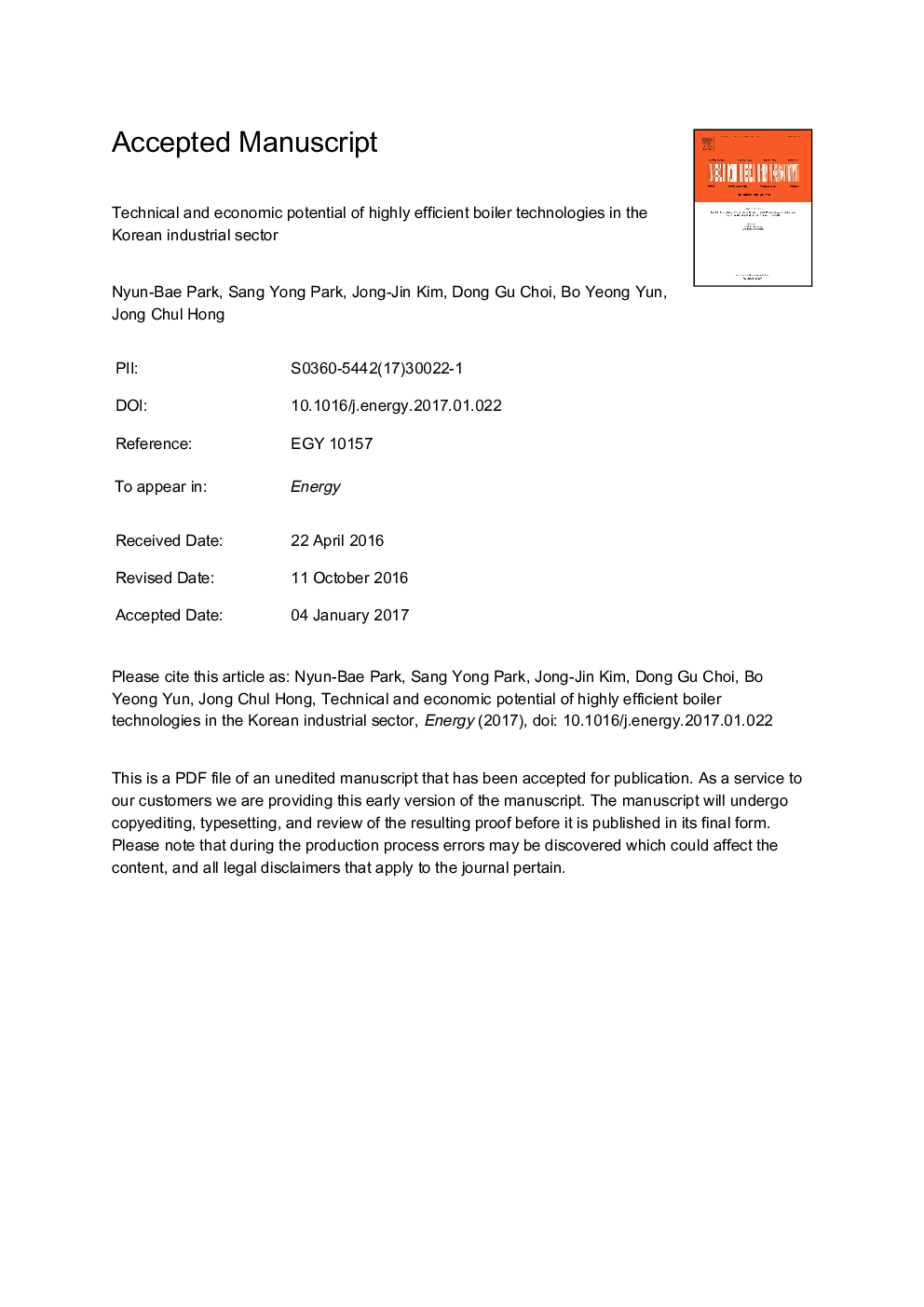| Article ID | Journal | Published Year | Pages | File Type |
|---|---|---|---|---|
| 5476367 | Energy | 2017 | 21 Pages |
Abstract
Energy saving potential and carbon dioxide (CO2) reduction potential of boiler technologies in the Korean industrial sector up to 2035 were analyzed using The Integrated MARKAL-EFOM System (TIMES) model based on bottom-up optimization. Final energy consumption by industrial indirect heating boilers in 2013 accounts for 7% of Korea's industrial energy consumption and 8% of the manufacturing sector's consumption. Energy consumption of industrial indirect heating boilers is expected to increase about 25% in the baseline scenario between 2013 and 2035. Technical potential against the baseline scenario by deploying only the most efficient technologies in new installation demand is 7.9% for energy saving and 20.7% for CO2 reduction by 2035. The most efficient technologies by boiler technology types were gas-fired super boilers. Economic potential against the baseline scenario through market competition between existing and high efficient technologies is 5.6% for energy saving and 6.1% for CO2 reduction by 2035. CO2 reduction potential is higher than energy-saving potential because fuel substitution toward gas was added to the energy-saving effect due to efficiency improvement. Research and development, information disclosure, regulation, and incentives for high-efficiency boiler technologies are necessary to realize technical potential as well as economic potential in industrial indirect heating.
Related Topics
Physical Sciences and Engineering
Energy
Energy (General)
Authors
Nyun-Bae Park, Sang Yong Park, Jong-Jin Kim, Dong Gu Choi, Bo Yeong Yun, Jong Chul Hong,
